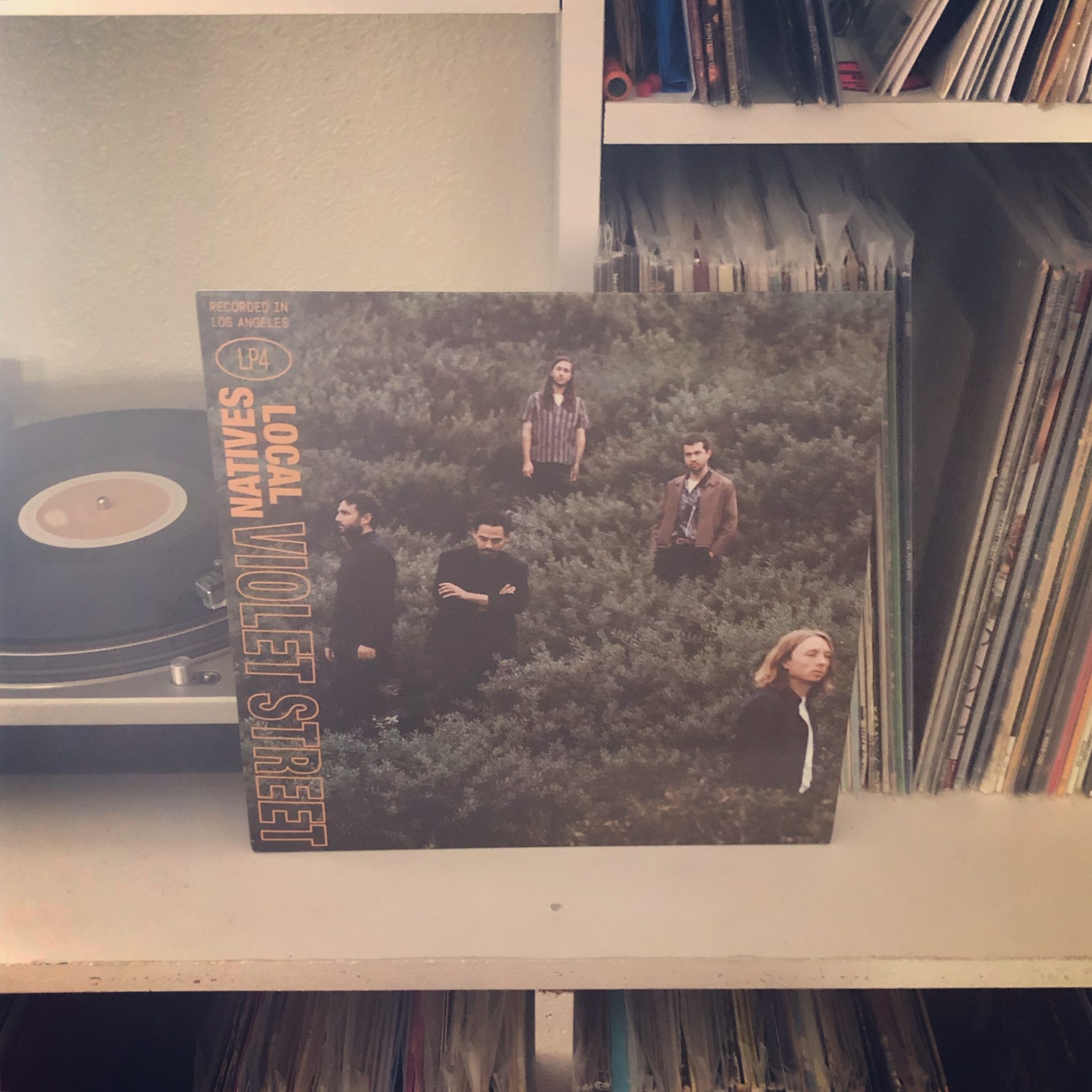
Remember when Local Natives was an indie rock band?
I certainly do. But after the delicious synthpop of Sunlit Youth, I came to peace with the fact that they’d probably never write a song like “Sun Hands” or “Breakers” again.
While I wasn’t surprised to see them to further embrace pop sensibilities, I was a bit shocked that Violet Street explored the disco-tinged soft rock of the late 70s.
Did I say shocked? I meant frickin’ delighted.
Gone are the glistening synths, clicking drum machines, and billowing pads of Sunlit Youth. In its place are a Fender Rhodes, acoustic percussion, a lush string section, and the funkiest bass lines they’ve ever put to tape. And as always, the richest harmonies this side of the Beegees.
“Vogue” opens the record with a billowing swirl of strings and a meditative melody on the pain of distance, both geographical and interpersonal. It then kicks into “When Am I Gonna Lose You,” a glittering disco track that feels like the second coming of Hall & Oates.
And that return doesn’t stop there. “Café Amarillo” puts that soft rock perfection to yearning strings, a plaintive Rhodes a restless rhythm section. “Megaton Mile” is driven by a clattering gang of percussion, stabbed guitar chords, and a hyperactive bass groove. At the end of the track, the rhythm section slows down and becomes the accompaniment for the more subdued “Someday Now” in a transition that mirrors the shift from “Vogue” to “When” but in reverse.
“Shy” rushes along with a horn section punctuating the space between lyrics. At the end of the track, there’s a wonderful call and response moment between the vocals and the horns that feels like the group battling a marching band. After the small-triumph balladry of “Garden of Elysian,” “Gulf Shores” sees the brief return of Sunlit Youth’s synthpop.
The record closes with “Tap Dancer,” a slow motion symphony featuring a grand piano, an acoustic guitar, huge washes of orchestral addition, and vocal effects. It’s deceptively subdued, affecting far beyond the scope of its simple composition.
But even through the shifts in sonic palette, this is still unmistakably a Local Natives record. The songcraft and tightness of composition are just as present here as they were on Hummingbird. And while they’ve taken a definite shift towards more straightforward pop music, they have always written with a pop sensibility that has informed even their darkest songs. The way they play their instruments might have changed drastically, but the vocal side of Local Natives has always been among the most infectious in the whole of recorded music. They may have been covering the Talking Heads, but they were taking vocal lessons from the titans of R&B.
That said, it took me some time for this record to convince me. It’s no secret that Hummingbird is my favorite Local Natives record—in fact, it’s one of my all time favorites. And while I enjoy Sunlit Youth immensely (immensely!) I’ve always mourned the shift in a small way. And Violet Street required the most listens from me before I was convinced that it was worth the purchase, not unlike Bon Iver’s i,i—two records that gave me pause from bands I’ve always bought at first opportunity. But even though it may be less immediately satisfying than their previous records, there’s a richness here that bids me give it the same attention.
Because if I’m honest, I may have listened to Sunlit Youth more often than Hummingbird in the last couple years. I expect Violet Street will have a similar permanence in my rotation.